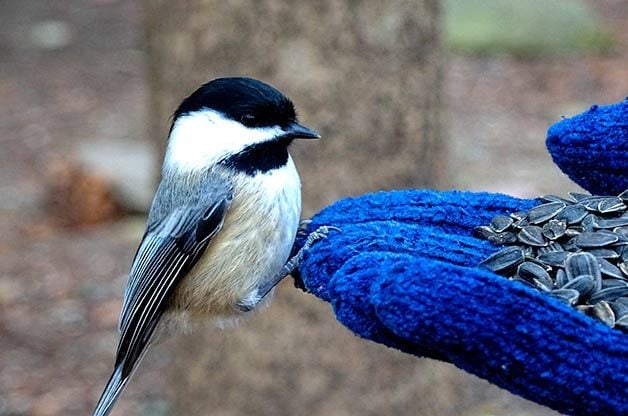Discover the Fastest Birds in North America
Updated: Mar. 24, 2022
From outwitting predators to raising a family, speed can boost a bird’s chances of survival. Learn about the fastest birds, and some slow birds, too!
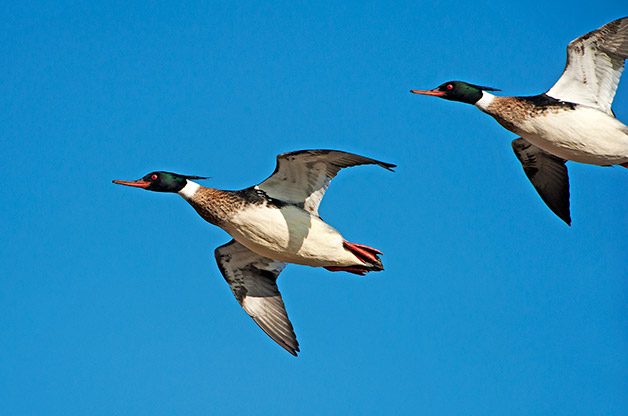
Being fast has its advantages for birds. In outwitting predators, raising a family or being the first to recognize a new source of food, being fast can boost a bird’s chances of survival. Who wins the race in your yard? Learn about the fastest bird species and you can decide!
Fastest Nest Builders
Most birds spend multiple days to as long as two weeks getting their home just right, but a pair of mourning doves can rapidly toss together a messy pile of sticks in just a few hours. The flimsy nest may be completed in a single morning or spread over a couple of days; the male is prone to interrupting construction to pursue the female. Why the rush? Mourning doves may raise up to six broods in a year, each one in a new nest. Here’s everything you need to know about baby mourning doves.
Fastest Eggs to Hatch
Most common backyard birds’ eggs hatch in 11 to 14 days, once the female starts sitting tight on that precious clutch. On occasion, house wren eggs may hatch in only nine days, although 12 days is more typical. Some house wren eggs have taken 16 days to hatch, which is more common with blue jays. You’ll know the moment, however, because the babies begin cheeping. Learn to identify bird eggs by color and size.
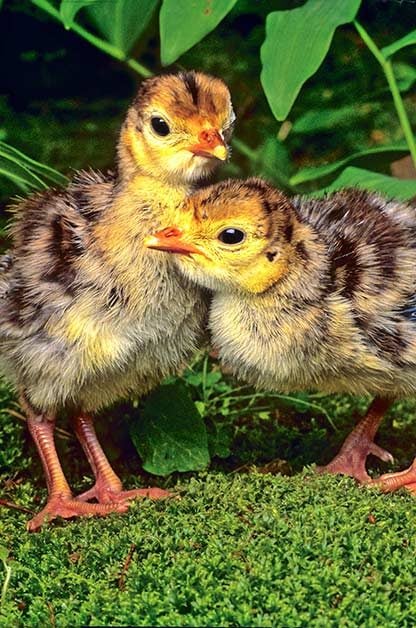
Fastest to Leave the Nest after Hatching
Caring for youngsters usually requires at least 10 days in the nest, and several days after they leave or “fledge.” But some bird babies are up and running around as soon as they break out of the shell. Baby killdeer, quail, grouse, wild turkeys and sandpipers of all sorts are precocious, fuzzy-feathered and able to run as soon as they enter the world. When the clutch hatches, the mother leads the babies off in a group to forage, offering her sheltering wings at naptime. Learn the five stages of a baby bird’s life.
Fastest Flying Birds
Good luck focusing those binoculars on a red-breasted merganser in flight. This large duck easily reaches 70 mph. The golden eagle, with its 6- to 7½-foot wingspan, is right up there, too, sometimes reaching about 80 mph if it’s in a steep glide. Snipes of all sorts, including our North American Wilson’s snipe, are so famously fast and erratic that the word “sniper” was coined for the shooters who could bring down such a difficult target. A snipe’s usual flight speed? About 60 mph. Among backyard birds, the prize goes to the mourning dove, which typically rockets along at about 40 mph, zooming to 55 mph when it goes into high gear to escape a predator. As a comparison, most birds fly at about 25 mph.
Fastest Running Bird on Foot
In North America, our speediest land bird is the greater roadrunner. Its usual pace is 20 mph, and it can reach about 26 mph in top gear. Still, it’s a slowpoke compared to the ostrich, which can sprint at 50 mph.
Fastest Diving Bird
Not much time to get out of the way if you’re the prey of a peregrine falcon—the superbly aerodynamic bird can reach almost 250 mph when it tucks its wings and goes into a head-first dive. That’s by far the fastest speed of any animal on earth. Even eagles can’t top that; the highest speed in a dive is around 150 mph for the golden eagle, 100 mph for the bald eagle.
Fastest Birds to Hand-Tame
A handful of nuts makes a great bribe to coax birds into eating out of your hand. Bold, curious chickadees are usually the fastest to check out the new “feeder,” followed by their titmice cousins. Nuthatches, especially the tiny red-breasted, are also relatively easy to hand-tame. Try the trick with winter finches, too—pine siskins, redpolls, crossbills and grosbeaks from the North, which are often less wary of humans than other feeder visitors.
Fastest Bug Catchers
It’s not easy to discern how many flying insects go down the hatch of a single swallow, swift or purple martin every day, but it’s a lot. Tirelessly coursing the air at about 30 mph, these incredible insect eaters gulp down anything and everything, from tiny gnats to big dragonflies and butterflies. Each species has its own preferred altitude: Tree swallows usually stay within 40 feet of the ground, for instance, while purple martins patrol as high as 500 feet. Learn to identify 8 types of swallows.
Fastest Metabolism
We’d have to chomp 300 cheeseburgers a day to keep up with the eating habits of hummingbirds, if our body worked as fast as theirs. The metabolism of a hummingbird is faster than that of almost every other animal on earth; only the body of the tiny shrew works faster. In flight, a hummer’s heart rate is around 1,000 beats a minute. Its digestion is 70 times faster than ours. This warp-speed metabolism slows down when a hummer isn’t flying. That’s why, although you might not guess from the constant buzz at your feeder, hummingbirds spend most of their waking hours perched and resting. Check out 13 jaw-dropping facts about hummingbirds.
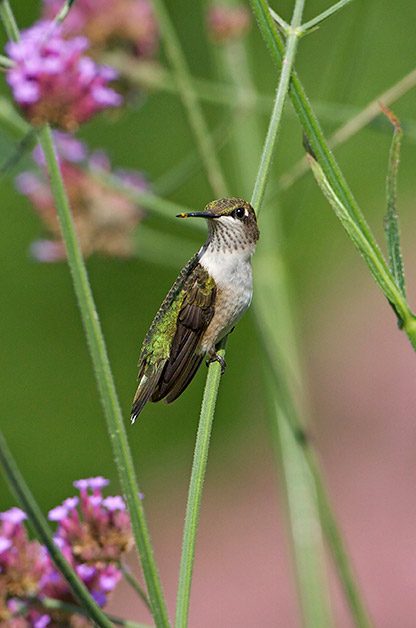
Fastest Migrator
Fall migration for the blackpoll warbler is a supermarathon combined with a binge of weight gain and loss. Their epic trip from northern Canada to South America includes 2,000 miles across the open water of the Atlantic Ocean. Small but mighty, the chickadee-size birds may fly that stretch nonstop, for more than 80 hours! To get fuel for the flight, these birds go on an eating binge and may almost double their weight in a week to 10 days, although the fattest blackpolls still weigh less than an ounce. They burn off any extra fat by the time they reach South America.
Fastest Wingbeat
Hummingbirds win this one, hands down. The smaller the hummingbird, the faster its wings beat. The ruby-throated hummingbird beats about 50 times a second. The giant hummingbird of the Andes, about the same length as a cardinal, hums at 12 beats a second. The bee hummingbird of Cuba, the smallest bird on earth at only 2 inches from bill tip to tail tip, buzzes along at 80 beats per second.
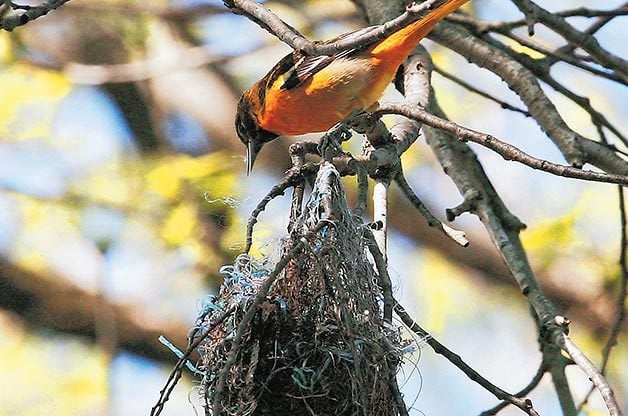
Slowest North American Birds
- Fliers: House sparrow, 15-18 mph, and American woodcock, 5 mph (circling courtship flight)
- Wingbeat: Large birds, like condors, pelicans and albratrosses
- Nest builder: Baltimore and Bullock’s oriole, up to 15 days
- Slowest to hatch: California condor, 56 days
- Slowest to leave the nest after hatching: Turkey vulture, 60-70 days, and red-tailed hawk, 40-50 days

